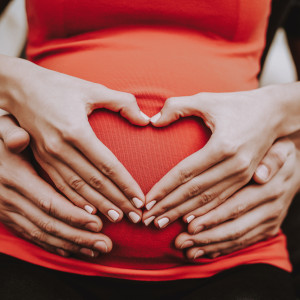Breast Health: What to Do If You Find a Lump

Photo credit: Getty Images
Finding a lump in your breast can be unsettling. But the good news about breast lumps is that they’re often benign (i.e., not cancerous). Nevertheless, it is something that needs to be taken very seriously.
“It’s important to see your doctor right away to rule out anything serious,” says Ted James, MD, Chief of Breast Surgical Oncology and Co-Director of the BreastCare Center at Beth Israel Deaconess Medical Center. “However, a breast lump is not always a cause for concern.”
At your doctor’s visit, he/she will examine your breasts and decide if further testing with a mammogram or breast ultrasound is warranted. These breast imaging studies can sometimes rule out a suspicious breast finding, like breast cancer, from something that’s benign, like a cyst, for example. If the results of these tests are questionable, the next step would be a biopsy.
A biopsy is performed, using a needle or surgery, to remove a sample of the area of concern so it can then be analyzed under a microscope to determine with certainty whether or not it’s cancerous.
“Women should know that even if your doctor doesn’t recommend a biopsy, but you’re still very concerned that something is wrong with your breast, you should share your concerns with your doctor or seek a second opinion,” says Dr. James.
If a biopsy is required, it’s usually recommended to have a core-needle biopsy as opposed to a surgical biopsy.
A core needle biopsy is performed in the doctor’s office or clinic while you are awake, using local anesthesia. The procedure — not considered an operation — involves inserting a needle into the breast to remove a small cylinder, or core, of breast tissue from the area of concern. A surgical biopsy, on the other hand, involves a surgeon removing some or all of the abnormal tissue in the breast. Then a pathologist analyzes the biopsy tissue specimen to determine if it’s cancerous.
Although it typically takes a few days to get the results of a biopsy, be sure to ask your doctor how long to expect until your biopsy results are ready and how you’ll be informed. “If you don’t hear back from your doctor’s office after the biopsy, don’t assume that the results must have been benign; check with your doctor,” says Dr. James.
If the results of your breast biopsy don’t show cancer, you should still speak to your doctor to find out if any follow-up is needed. Some benign breast conditions, for example, can increase your risk of developing breast cancer and may need to be addressed by a specialist.
If the results of the biopsy do indicate cancer, you’ll need to speak with a cancer specialist about your treatment options.
It’s important to know that a breast lump isn’t the only sign of breast cancer. In addition to lumps, other potential symptoms of breast cancer include:
- Dimpling or puckering of the skin in the breast
- Sudden or gradual inversion of the nipple
- Redness or swelling of the breast
- Thickening of the skin over the breast
- Swollen lymph nodes under the arm or above the collarbone
- Unusual breast pain
- Change in the shape of the breast
- Certain forms of nipple discharge
- A rash or crusting involving the nipple
Often, the earliest signs of breast cancer cannot be felt and are only identified by a mammogram (x-ray of the breast), so appropriate screening is important. Outcomes of breast cancer treatment are generally better when detection happens early.
For advice about your medical care, consult your doctor. For more information about Beth Israel Deaconess Medical Center, visit bidmc.org.
This is a paid partnership between Beth Israel Deaconess Medical Center and Boston Magazine


